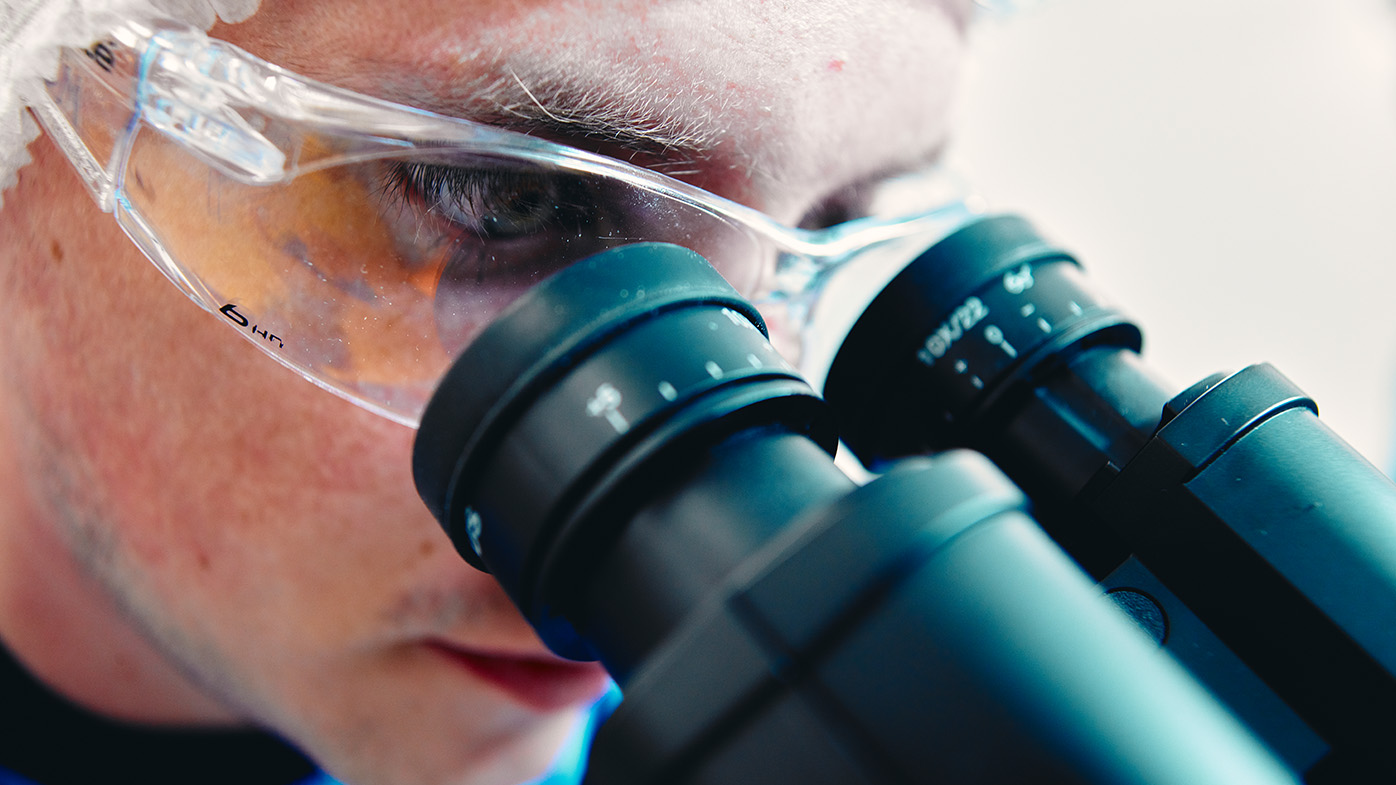Crystallizing exponential possibilities in protein degradation
A crystallographer by training, Jinyi Zhu, PhD, works with his Protein Homeostasis Structural Biology team to identify new proteins of interest that, if targeted for degradation, could transform patient outcomes in diseases.
From the time he was an undergraduate student majoring in chemistry, Zhu has been fascinated by elucidating the structure of small molecules and proteins with advanced imaging techniques. He applies this interest at Bristol Myers Squibb to his research in protein degradation.
Protein degradation is the process by which proteins are naturally destroyed in a cell in order to maintain protein homeostasis, or an equilibrium of proteins in the body. The body is constantly making and remaking proteins (creation), while also removing ones that have become inactive or mutated (degradation). When a cell is unable to degrade certain proteins, the proteins can accumulate, causing diseases like cancer. With targeted protein degradation, researchers are harnessing the cell’s own machinery to degrade several new classes of proteins that were previously considered “undruggable.”

Jinyi Zhu, PhD
Principal Scientist, Protein Homeostasis Structural Biology
Hear from Jinyi Zhu on how Bristol Myers Squibb is advancing research in the field of targeted protein degradation to transform patient outcomes using Cryo-EM technology.
Subscribe to Our stories alerts
Beyond just relevant information about Bristol Myers Squibb's therapeutic areas and innovation, Our stories offer a window into the work our employees do every day for patients.
Zhu’s work is currently focused on oncology with the aim of degrading proteins that are important to tumor growth and survival. He uses structural biology — an in-depth understanding of how proteins are shaped — to decipher potential proteins to target for degradation and how to optimize degraders to better interact with these targets.
“I have always had an interest in looking at the structure and function of small molecules and proteins, and this interest came to life at Bristol Myers Squibb where I now study how compounds interact in order to develop novel therapies,” said Zhu. “The more we understand these processes, the better it is for the patient. That’s the really amazing part of this career.”
In order to do this work, Zhu must be able to visualize these complex protein structures. He does so using cryogenic electron microscopy (cryo-EM). Cryo-EM is an advanced method of imaging large, complex and dynamic molecules, such as proteins. Cryo-EM allows researchers to see the 3D details of protein structures and observe how proteins interact with one another at physiologic conditions (their natural environments within the body).
Cryo-EM has enabled purposeful advancements in the field of protein degradation by allowing researchers to rationally design and optimize potential therapeutic molecules. Knowing how proteins are shaped helps to accelerate the discovery and development process, turning on a “lightbulb” where previously scientists were working in the dark.
Download the full Cryo-EM Infographic here to learn more
Enabling purposeful advancements
Bristol Myers Squibb is applying cryo-EM in research into the development of two different types of protein degraders: molecular glues (cereblon E3 ligase modulators, CELMoD® agents) and heterobifunctional agents (also called ligand-directed degraders, or LDDs).
- CELMoD agents are molecules that act as molecular glue to alter the protein-binding properties of cereblon (an important component of the protein degradation cellular machinery) to promote interaction with and degradation of disease-causing proteins.
- LDDs are 3-part molecules (two ends joined by a linker) engineered to link target proteins with key components of the protein degradation cellular machinery, redirecting the machinery to degrade the target proteins.
Using cryo-EM, Zhu and his team are able to understand how these protein degraders interact with and affect the target protein and answer questions that inform decisions made by the broader Research and Early Development team, like how to optimize the structure of a potential drug to better interact with the target.
Zhu finds parallels between his work in the lab and in his interests outside of work. As an avid gamer, he uses video games as a tool to relax his brain, but he also believes that video games help train his brain to overcome different challenges and adapt to tackling problems. In both video games and research, Zhu works to prove or disprove a hypothesis through strategic decisions, all to overcome the obstacles placed in front of him.
The field of protein degradation has advanced by leaps and bounds in recent years and is poised to see exponential growth in the coming years. Bristol Myers Squibb is committed to advancing the field of protein degradation with the goal of transforming patient outcomes. Experts such as Zhu and their passion for advancing care through research drive the company forward toward the realization of the immense possibilities yet to come.
About Bristol Myers Squibb
Bristol Myers Squibb is a global biopharmaceutical company whose mission is to discover, develop and deliver innovative medicines that help patients prevail over serious diseases. As global citizens, we work sustainably and responsibly to create a positive impact in the communities where we live and work.



